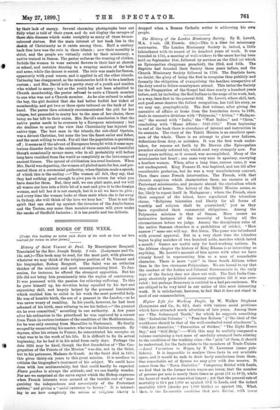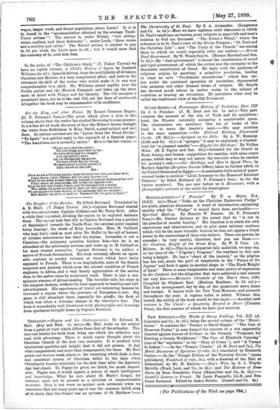Higher Life for Working People, by W. Walker Stephens (Longmans
and Co., 3s. 6d.), deals with various social problems which have attracted much attention of late years. Among these are "The Submerged Tenth," for which he suggests something like "Industrial Colonies" ; "Poor-law Reform" (" the ideal of the workhouse should be that of the well-conducted rural almshouse"), "Old-Age Annuities," "Prevention of Strikes," "The Eight Hours Day," and "Self-Help."—With this may be usefully compared a volume containing a vast mass of carefully arranged facts relating to the condition of the working class—the "pick" of them, it should be understood, for the facts relate to the members of Trade-Unions —Local Variations in Wages, by F. IV. Lawrence (same pub- lishers). It is impossible to analyse these facts in our available space, and it would be rash to draw hasty conclusions from them. One remarkable set of figures we may give with due reserve. It comes from the "Town Statistics." Comparing Bristol with Leeds, we find that in the former town wages are lower, that the number of persons per acre is nearly three times as great (51 to 18-3), while the hours of work are somewhat longer ; yet that the general rate of mortality is 11.4 per 1,000 as against 19-2 in Leeds, and the infant mortality 138.9 (deaths per 1,000 births) as against 191. What, then, is the favourable condition that puts Bristol, with lower wages, longer work, and denser population, above Leeds ? Is it to be found in the "accommodation obtained by the average Trade- Union artisan " ? The answer is, under Bristol, "two sitting- rooms, scullery, and three bedrooms " ; under Leeds, "three rooms and a scullery and cellar." The Bristol artisan is content to pay 6s. 6d. per week, the Leeds man 4s. 6d. ; but it would seem that the economy of 2s. costs him dear.







































 Previous page
Previous page